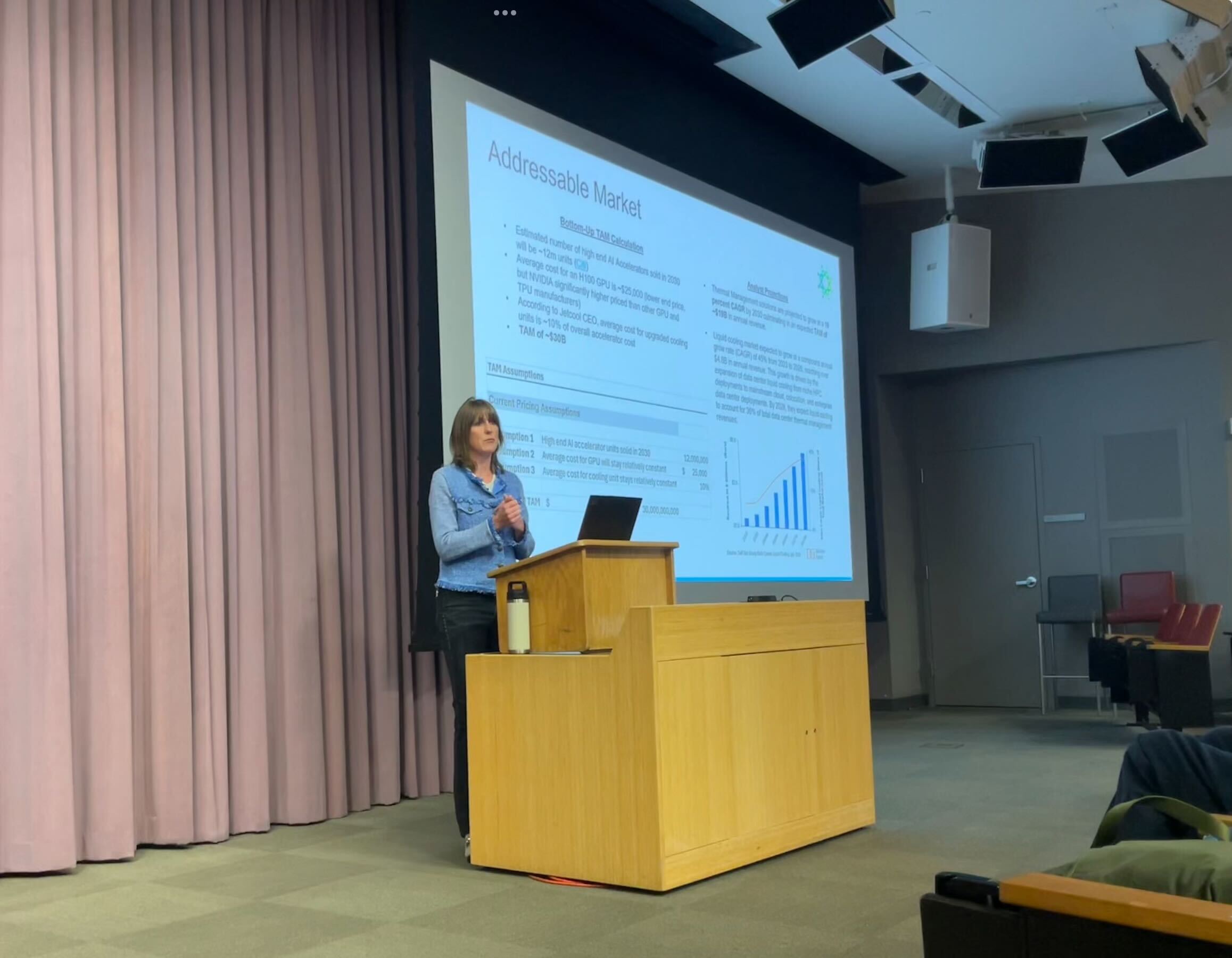Residents voice concerns with AES battery energy storage system – Dubois County Free Press, Inc.

Report on Proposed AES Battery Energy Storage System and Solar Project in Dubois County
Executive Summary
A proposed AES battery energy storage system (BESS) and accompanying solar project in Dubois County has elicited significant safety, environmental, and governance concerns from local residents. During a county commissioners’ meeting, citizens highlighted potential risks associated with the project, particularly its proximity to local schools and residential properties. The debate underscores a critical conflict between the advancement of renewable energy infrastructure, aligned with Sustainable Development Goal 7 (Affordable and Clean Energy), and the imperative to uphold community safety, environmental protection, and institutional accountability, which are central to several other SDGs.
Key Concerns Raised by Community Stakeholders
Residents presented a series of concerns regarding the project’s potential impact on the community and environment. These issues are categorized as follows:
- Public Safety and Health Risks: The primary concern involves the risk of “thermal runaway” in lithium-ion battery systems, which can lead to chemical fires that are difficult to extinguish and release flammable, toxic gases. The project’s location within a two-mile radius of three schools—Southridge High School/Middle School, Holland Elementary, and Huntingburg Elementary—amplifies these safety concerns.
- Emergency Response Preparedness: Questions were raised about the capacity of local fire departments to manage a BESS fire, which requires specialized training and equipment. The lack of established evacuation plans for nearby schools and homes was also noted as a critical deficiency.
- Environmental and Land Use Impact: Stakeholders expressed fears of long-term environmental damage, including soil contamination in the event of a fire. The conversion of agricultural land for the project led to concerns about creating a “solar wasteland,” questioning the project’s alignment with sustainable land management principles.
- Economic Viability and Property Rights: The economic efficiency of the project was questioned, citing energy losses during the battery charge/discharge cycle. Furthermore, residents raised concerns about the impact on adjacent property values, potential increases in property tax rates, and the adequacy of decommissioning agreements.
- Corporate Communication and Transparency: It was reported that communication from AES Indiana has been inconsistent, with not all affected property owners receiving information about the project.
Analysis in the Context of Sustainable Development Goals (SDGs)
The issues presented by Dubois County residents directly relate to the principles of the United Nations Sustainable Development Goals. While the project aims to support SDG 7, its implementation raises conflicts with other critical goals.
- SDG 7: Affordable and Clean Energy
- The AES project is designed to contribute to the clean energy transition by providing renewable solar power and energy storage. However, the community’s response emphasizes that the pursuit of this goal must not occur at the expense of public safety and environmental integrity.
- SDG 3: Good Health and Well-being & SDG 11: Sustainable Cities and Communities
- The potential for toxic gas release from battery fires poses a direct threat to public health (SDG 3).
- The lack of robust safety protocols and emergency evacuation plans undermines the objective of creating safe, resilient, and sustainable communities (SDG 11). The project’s proximity to critical community infrastructure like schools makes this a paramount concern.
- SDG 15: Life on Land
- Concerns over the conversion of productive agricultural land and the risk of soil contamination from a potential chemical fire directly challenge the principles of protecting terrestrial ecosystems and halting land degradation.
- SDG 12: Responsible Consumption and Production
- Residents’ questions regarding decommissioning plans highlight the need to consider the entire lifecycle of the energy project, ensuring responsible management from installation to end-of-life, a core tenet of SDG 12.
- SDG 16: Peace, Justice and Strong Institutions
- The discussion revealed limitations in local governance, as county commissioners noted they are prohibited by state code from permitting or regulating the BESS operation directly. This points to a need for stronger institutional frameworks to manage new energy technologies. The lack of transparent communication from the developer further underscores a deficit in corporate accountability and inclusive decision-making processes.
Governmental and Corporate Response
County Commissioners’ Position
The Dubois County Commissioners acknowledged their limited authority over utility-scale energy projects. Commissioner Chad Blessinger stated that while the county cannot prohibit the project or require permits for the BESS itself, it can regulate certain aspects, including:
- Setbacks
- Road use agreements
- Noise limitations
The commissioners affirmed that agreements between AES and private landowners are outside their jurisdiction but invited residents to provide further information as the project develops.
AES Indiana’s Engagement
According to residents, AES Indiana sent letters to some, but not all, neighboring property owners on August 18, 2025. The company has indicated it plans to host a local open house to discuss the project, though a date has not been specified.
Conclusion and Outlook
The proposed AES BESS and solar project in Dubois County represents a significant intersection of energy transition goals and local community sustainability. While contributing to SDG 7, the project faces substantial opposition rooted in valid concerns related to SDGs 3, 11, 12, 15, and 16. The path forward requires a comprehensive approach that prioritizes transparent communication, rigorous safety and environmental assessments, and the development of effective regulatory frameworks. Achieving a sustainable outcome will depend on the ability of the developer and government bodies to adequately address the community’s concerns and ensure that the deployment of clean energy technology enhances, rather than compromises, local well-being and environmental health.
Analysis of Sustainable Development Goals in the Article
1. Which SDGs are addressed or connected to the issues highlighted in the article?
The article discusses issues related to a proposed solar project and battery energy storage system, touching upon several Sustainable Development Goals (SDGs). The primary connections are with energy, community safety, health, land use, and governance.
- SDG 3: Good Health and Well-being: The residents’ concerns about “flammable and toxic gases” from potential battery fires and “soil contamination” directly relate to protecting human health from hazardous materials.
- SDG 7: Affordable and Clean Energy: The core subject of the article is a “battery energy storage system and solar project,” which are key technologies for increasing the share of renewable energy in the energy mix.
- SDG 11: Sustainable Cities and Communities: The debate over the project’s location near schools and homes, the lack of local emergency preparedness (“proper training and equipment”), the absence of evacuation plans, and the limits of local government authority in planning and regulation are central themes of this goal.
- SDG 13: Climate Action: Although the article focuses on local opposition, solar power and energy storage are fundamental infrastructure for mitigating climate change. The issues raised highlight the challenges in implementing climate solutions.
- SDG 15: Life on Land: Concerns are raised about the long-term environmental impacts, including “soil contamination” and the conversion of agricultural land, with residents fearing the area could become a “solar wasteland.”
- SDG 16: Peace, Justice and Strong Institutions: The article highlights issues of governance, as county commissioners have “limited authority” and cannot permit or stop the project. The citizens’ struggle to have their concerns addressed and the incomplete communication from the company (AES) point to challenges in ensuring responsive and inclusive decision-making.
2. What specific targets under those SDGs can be identified based on the article’s content?
Based on the issues discussed, the following specific SDG targets are relevant:
- Target 3.9: By 2030, substantially reduce the number of deaths and illnesses from hazardous chemicals and air, water and soil pollution and contamination.
- The article directly addresses this target through residents’ fears of “thermal runaway” in batteries, which can “release flammable and toxic gases” and lead to “soil contamination,” as seen in an incident in California.
- Target 7.2: By 2030, increase substantially the share of renewable energy in the global energy mix.
- The proposed “solar project” is a direct contribution to this target by generating clean energy.
- Target 11.5: By 2030, significantly reduce the number of deaths and the number of people affected… caused by disasters…
- The community’s concern about “chemical fires that are extremely difficult to extinguish” and the lack of preparedness for such an event highlight the need to manage risks associated with new energy technologies.
- Target 11.b: By 2030, substantially increase the number of cities and human settlements adopting and implementing integrated policies and plans towards… disaster risk reduction…
- The questions raised by residents about whether “evacuation plans exist for nearby schools and residences” and if fire departments are equipped for lithium battery fires point to a gap in local disaster risk reduction planning.
- Target 15.3: By 2030, combat desertification, restore degraded land and soil, including land affected by… contamination…
- The potential for “soil contamination” from a battery fire and the fear of the area becoming a “solar wasteland” connect directly to the goal of preventing land degradation.
- Target 16.7: Ensure responsive, inclusive, participatory and representative decision-making at all levels.
- The article exemplifies a challenge to this target. Citizens are participating in a meeting, but local officials state they have no “power to permit it or stop it.” Furthermore, the company’s failure to notify “all affected neighbors” shows a lack of inclusive communication.
3. Are there any indicators mentioned or implied in the article that can be used to measure progress towards the identified targets?
The article implies several qualitative and quantitative indicators that could be used to measure progress:
- Indicator for Target 7.2: The existence and planned implementation of a “battery energy storage system and solar project” serves as a direct indicator of investment in renewable energy infrastructure.
- Indicator for Target 11.5/11.b: The status of emergency preparedness, measured by:
- The existence (or absence) of “evacuation plans for nearby schools and residences.”
- The availability of “specialized equipment and methods” for local fire departments to handle chemical fires.
- The provision of “training for fire departments” on responding to lithium battery fires.
- Indicator for Target 3.9: The potential for “soil contamination” and the release of “toxic gases” are risk indicators. Measuring soil and air quality around such facilities, especially after an incident, would be a direct measure.
- Indicator for Target 15.3: The change in land use from agricultural to energy production is an indicator. The phrase “solar wasteland” implies a qualitative indicator of perceived land degradation.
- Indicator for Target 16.7: The level of public participation and inclusivity can be measured by:
- The number of public meetings held (e.g., the “local open house” planned by AES).
- The proportion of “affected neighbors” who received communication about the project.
4. Summary Table of SDGs, Targets, and Indicators
| SDGs | Targets | Indicators Identified in the Article |
|---|---|---|
| SDG 3: Good Health and Well-being | 3.9: Reduce illnesses from hazardous chemicals and pollution. | Potential for “flammable and toxic gases” and “soil contamination” from battery fires. |
| SDG 7: Affordable and Clean Energy | 7.2: Increase the share of renewable energy. | Implementation of a “battery energy storage system and solar project.” |
| SDG 11: Sustainable Cities and Communities | 11.5: Reduce the number of people affected by disasters. 11.b: Implement integrated policies for disaster risk reduction. |
Absence of evacuation plans for nearby schools; Lack of specialized training and equipment for local fire departments. |
| SDG 15: Life on Land | 15.3: Combat desertification and restore degraded land. | Conversion of agricultural land; Risk of soil contamination; Concern of the area becoming a “solar wasteland.” |
| SDG 16: Peace, Justice and Strong Institutions | 16.7: Ensure responsive, inclusive, and participatory decision-making. | Limited authority of county commissioners to regulate the project; Incomplete communication to all “affected neighbors.” |
Source: duboiscountyfreepress.com
What is Your Reaction?
 Like
0
Like
0
 Dislike
0
Dislike
0
 Love
0
Love
0
 Funny
0
Funny
0
 Angry
0
Angry
0
 Sad
0
Sad
0
 Wow
0
Wow
0

















































.jpg.webp?itok=0ZsAnae9#)





:focal(1500,1000)/https://media.globalcitizen.org/a6/9a/a69a4720-d8a1-4715-b596-18738d03c05c/rotary_polio_hero_image.jpg?#)




















